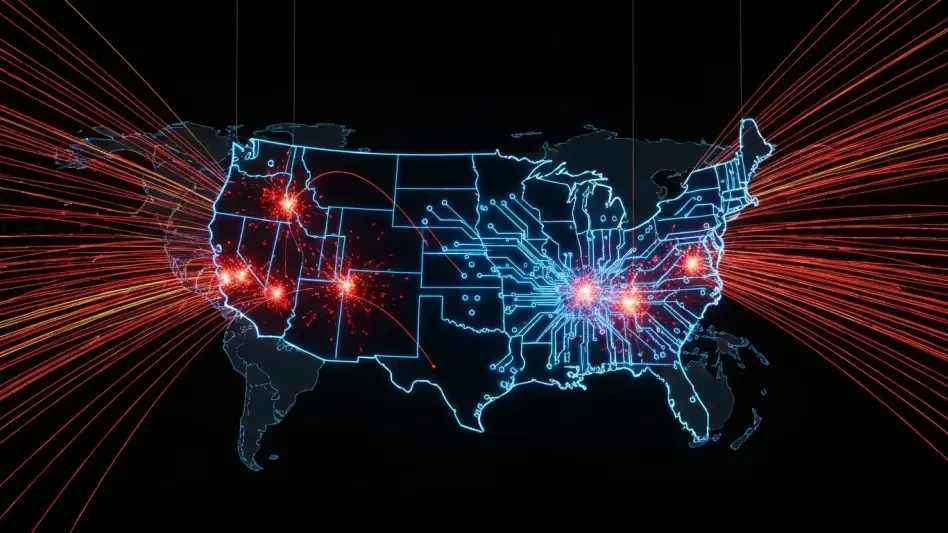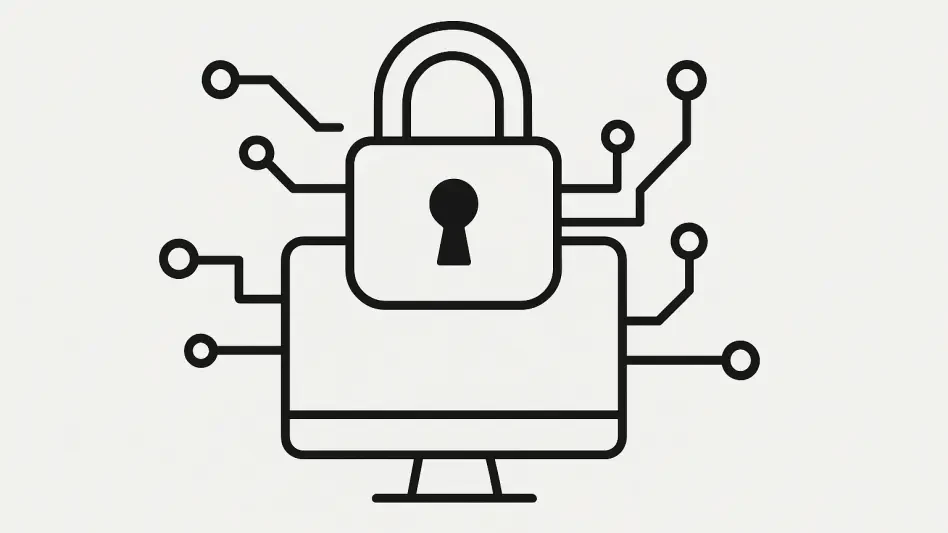In the digital age, the traditional password paradigm faces increasing scrutiny due to its vulnerability and inconvenience. With the massive discovery of 16 billion stolen login credentials, the glaring weaknesses of password security highlight the urgent need for more secure alternatives. This breach, involving data spread across 30 datasets, exposes a sinister reality: cybercriminals have become more adept and organized, threatening the security of individuals and organizations worldwide. As the magnitude of such breaches grows, the call for transitioning from conventional passwords to more secure passkeys is amplified. The discussion centers around whether the time has come to finally abandon passwords in favor of next-generation security protocols that promise enhanced online protection.
The Nature and Scale of Cyber Threats
Unprecedented Breaches and Their Implications
The revelation of these billions of stolen credentials serves as a harbinger of escalating cyber threats and breaches that are becoming all too common. The fact that 29 out of the 30 datasets were new signifies a marked increase in cybercriminal activity, with infostealer malware playing a pivotal role. Such malware expertly infiltrates users’ web browsers to harvest passwords, setting the stage for credential stuffing attacks. These attacks utilize automated bots to persistently attempt various login credentials across countless platforms, aiming to gain unauthorized access. The discovery revealed not just passwords but a whole spectrum of credentials, including tokens, cookies, and metadata, equipping cybercriminals with comprehensive tools to execute targeted hacking endeavors with alarming precision.
The scale of the breach, with over 184 million records overlapping a prior breach disclosed in May, underscores the persistent threat to major services, including Apple, Google, and Facebook. These credentials extend to sensitive domains such as banking and healthcare, pointing towards a systemic aggregation of data from numerous infections across disparate networks. The worrisome breadth of information available to hackers from these breaches necessitates a reassessment of current security measures, highlighting an urgent need for robust defenses beyond traditional password mechanisms.
Escalating Concerns and the Inadequacies of Current Protections
The fear of credential stuffing attacks, identity theft, and account takeover has escalated due to the extensive nature of the stolen credentials. This fear goes beyond simple passwords, touching upon deeper, underlying vulnerabilities ingrained in outdated security frameworks. Despite longstanding advice urging users to frequently change passwords and create complex ones, such measures often fall short in the face of advanced cyber tactics. Experts argue that these are but temporary solutions to a problem that requires fundamental change. Brian Soby of AppOmni articulated the outdatedness of traditional security measures, pointing out the need for more sophisticated defenses, particularly for critical SaaS applications that are integral to modern economies.
Alarmingly, the frequency and scale of these credential dumps continue to reveal the glaring inadequacies in current digital defenses. It is clear that reliance on passwords alone is untenable, paving the way for dialogue on transitioning to more effective security protocols like passkeys. This ongoing vulnerability places individuals’ and organizations’ data at considerable risk, underscoring the necessity for more secure, intuitive forms of digital authentication to adapt effectively to this evolving cybersecurity landscape.
The Rise of Passkeys: A New Era of Authentication
Advantages and Industry Adoption of Passkeys
Amid the escalating concerns surrounding password security, passkeys emerge as a promising alternative, characterized by both enhanced security and user convenience. Unlike traditional passwords, passkeys are designed to be fundamentally resistant to phishing attempts, credential stuffing, and other common forms of cyber attacks. Their cryptographic nature ensures that authentication data is securely stored and transmitted, significantly reducing the risk of unauthorized access. Major industry giants like Apple, Google, and Microsoft are leading the charge, integrating passkeys into their ecosystems to effectively secure users against modern cyber threats.
Passkeys are being increasingly promoted due to their ability to streamline the authentication process without compromising safety. By eliminating the need for users to manage complex passwords for each account, passkeys simplify the user experience, making secure access more intuitive. This shift is evidenced by Mastercard’s initiative to incorporate passkeys more broadly, marking a significant step towards mainstream adoption. As more organizations recognize the limitations of passwords, the shift towards passkeys is seen not only as innovative but necessary to safeguard digital interactions in today’s threat landscape.
The Transition Requires Cultural Adaptation and Technological Support
While the trajectory towards passkeys appears promising, the movement requires both technological adjustments and cultural adaptation. Consumers and businesses alike must navigate the transition by understanding the functionality and benefits of passkeys, adapting infrastructures and behaviors accordingly. Education becomes key, as users must be informed about the distinctions between passwords and passkeys and the practical advantages the latter offers concerning security and convenience. The successful implementation of passkeys hinges on widespread awareness and acceptance.
Technologically, the transition demands robust support systems that facilitate seamless integration within existing frameworks. Software developers and security experts are tasked with ensuring compatibility across platforms and fostering an environment where passkeys can flourish. The collaborative effort necessitates a paradigm shift not only in technical terms but in how digital security is perceived and enacted. As organizations work alongside users to adopt this new approach, the path forward promises a more secure digital frontier where vulnerabilities, such as those displayed by recent breaches, become increasingly obsolete.
A Call to Action in Cybersecurity
Re-evaluating Security Structures for a Safe Digital Environment
Reflecting on the massive data breach, it becomes evident that the status quo of digital security is not tenable. The importance of re-evaluating security frameworks to stay ahead of emerging threats cannot be overstated. The narrative surrounding the breach underscores the urgency of moving beyond traditional methods and embracing innovative solutions that can provide stronger defenses against cybercriminal techniques. As these breaches yield both new and recurring data, they highlight an educational opportunity to drive the adoption of cutting-edge security measures like passkeys. The transition to a passwordless future is not merely an advancement but a necessary evolution to effectively secure online ecosystems.
The public’s heightened concern about personal data security following the breach illustrates a societal call for elevated security standards. The growing traffic to platforms monitoring such breaches indicates that awareness of cyber vulnerabilities is pervading, fostering a demand for improved security solutions. By prioritizing proactive adaptations such as adopting passkeys, organizations can reinforce the defensive mechanisms necessary to protect digital identities from persistent threats. This shift not only addresses present vulnerabilities but also anticipates future cyber challenges by embedding resilience within digital frameworks.
Looking Ahead: Embracing Innovation for Security Evolution
The exposure of billions of stolen credentials signals growing cyber threats, now alarmingly frequent. The emergence of 29 new datasets indicates a surge in cybercriminal actions, with infostealer malware significantly contributing. This type of malware infiltrates web browsers to extract passwords, paving the way for credential stuffing attacks. These attacks employ automated bots to endlessly test various login credentials on numerous platforms, aiming for unauthorized access. Beyond passwords, the breach exposed diverse credentials, such as tokens, cookies, and metadata, arming cybercriminals for precise hacking operations.
With over 184 million records overlapping a previous breach revealed in May, the scale highlights an ongoing risk to key services like Apple, Google, and Facebook. These credentials span critical areas like banking and healthcare, suggesting a systematic collection of data from many infections across various networks. The breadth of information available to hackers from these breaches demands a reevaluation of current security strategies, emphasizing an urgent requirement for stronger defenses beyond conventional passwords.








